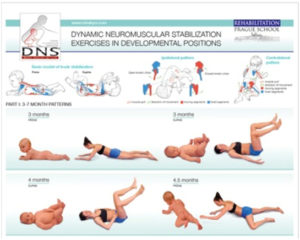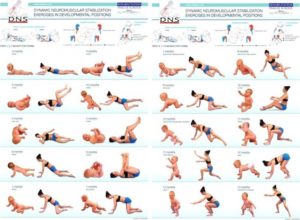 Should you consider an MRI for chronic Lower Back Pain (LBP)? Maybe, but it depends quite a lot on your history. First, numerous studies show there is little correlation between patient histories, MRI results and outcomes. In fact, the American College of Physicians and American Pain Society published a joint article in the Annals of Internal Medicine about this all the way back in 2007. Also, they stated plainly that, “Clinicians should not routinely obtain imaging or other diagnostic tests in patients with nonspecific low back pain (strong recommendation, moderate-quality evidence)”.
Should you consider an MRI for chronic Lower Back Pain (LBP)? Maybe, but it depends quite a lot on your history. First, numerous studies show there is little correlation between patient histories, MRI results and outcomes. In fact, the American College of Physicians and American Pain Society published a joint article in the Annals of Internal Medicine about this all the way back in 2007. Also, they stated plainly that, “Clinicians should not routinely obtain imaging or other diagnostic tests in patients with nonspecific low back pain (strong recommendation, moderate-quality evidence)”.
You can read the complete article here.
Why Isn’t an MRI for Low Back Pain Useful?
For most non-specific cases of LBP, an MRI is simply not a reliable indicator. Multiple studies have demonstrated that the number of false positives is too high. Other studies show that MRIs are not useful in determining the cause of low back pain. Most experts agree that the best approach to managing most LBP cases is to treat conservatively and avoid surgery. For instance, consider this excerpt from a comprehensive article from Harvard University written in 2006:
“MRIs have another drawback: They can be too sensitive. In three studies, volunteers who were entirely free of back pain received MRIs of the spine. Even in those folks, 46%–93% had degenerative discs, 24%–79% had bulging discs, and 22%–40% had herniated discs. If these people had complained of back pain, doctors would be tempted to blame it on disc disease, perhaps starting them down the path to invasive therapy. The same could happen to you. If you have back pain and your MRI shows arthritis or disc disease, there is no assurance that the anatomic abnormality is actually responsible for the pain”.
Moreover, they said, “MRIs are rarely indicated for uncomplicated low back pain… In most cases, MRIs should be performed only if surgery is a serious consideration”.
 Finally, "In the long term, only movement therapy seems to provide an evident effectiveness".
So, that's why we suggest that those suffering from moderate non-specific LBP should consider a comprehensive, conservative treatment program. This may include trigger point therapy, fascial stretching (to increase range of motion and reduce possible nerve entrapment) and movement therapy such a neuromuscular stabilization.
Finally, "In the long term, only movement therapy seems to provide an evident effectiveness".
So, that's why we suggest that those suffering from moderate non-specific LBP should consider a comprehensive, conservative treatment program. This may include trigger point therapy, fascial stretching (to increase range of motion and reduce possible nerve entrapment) and movement therapy such a neuromuscular stabilization.
 For most of us, the challenges with our back are largely the result of poor movement programs. We don't think about it how we move. We just move. And if we move incorrectly, over time we develop taut bands of muscle, connective tissue problems (too tight, too loose or both) and degenerative changes to our spine.
When you are in pain, it can be difficult to learn new movement patterns. Because of this, we often begin with trigger point therapy to reduce pain. This can also help to release muscles that are contracted or in spasm. In addition, we often use fascial stretching to further increase range of motion. In the process, we may find and release nerve entrapments that contribute to referred pain such as sciatica.
For most of us, the challenges with our back are largely the result of poor movement programs. We don't think about it how we move. We just move. And if we move incorrectly, over time we develop taut bands of muscle, connective tissue problems (too tight, too loose or both) and degenerative changes to our spine.
When you are in pain, it can be difficult to learn new movement patterns. Because of this, we often begin with trigger point therapy to reduce pain. This can also help to release muscles that are contracted or in spasm. In addition, we often use fascial stretching to further increase range of motion. In the process, we may find and release nerve entrapments that contribute to referred pain such as sciatica.
 However, no matter how much your back hurts, you can begin with one of the simplest and most important movement therapies - diaphragmatic breathing. Of course, a comprehensive program of movement therapy involves more than this. But you can't hurt yourself by breathing properly. Plus, it will be the starting point for every movement therapy we use.
However, no matter how much your back hurts, you can begin with one of the simplest and most important movement therapies - diaphragmatic breathing. Of course, a comprehensive program of movement therapy involves more than this. But you can't hurt yourself by breathing properly. Plus, it will be the starting point for every movement therapy we use.
So, if you are suffering from Low Back Pain today, start with some deep breaths. Then give us a call at 630-858-0000 to make an appointment. We’ll begin with some basic screening tests. We’ll be the first to refer you to a physician if we see a more serious problem.
